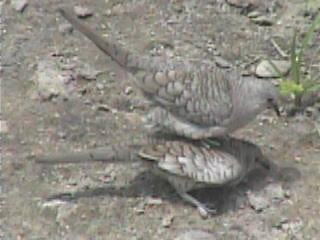Loughman to Rappole and Glasscock – 9/25/08: A week ago several of the CONE observers noticed a color-banded Green Jay where the band appeared to be causing a problem with the foot. We’ve seen this bird again today, and can see that the bird is in trouble. Please see the attached pictures. [Click on picture to see CONE observer’s comments]
At least two of us are banders, and agree we would want to know if a band was harming the bird. We urge you to attempt to re-capture the bird and remove the band. As I hope you can imagine, it’s upsetting to all observers to see a creature whose suffering appears due to the hand of man. Thank you.
Rappole to Loughman and Glasscock – 9/26/08: Thank you for bringing this problem to our attention. We will do our best to correct it, but please understand that capture of Green Jays is not easy. It took me a month to capture and band the six young birds that visit the feeder now. Also, as you know from your own banding experience, recapture of birds once captured is generally more difficult than original capture.
Green Jays, as you may know, are very hard on bands. They work at them with their powerful bills, and the most likely scenario in this case is that this bird will fully remove the band itself. We will hope for that outcome, and, in the meantime, take what action we can to try and correct it ourselves.
Loughman to Rappole and Glasscock – 9/26/08: Thank you for your note. Having banded Western Scrub-Jays, I am indeed aware of the challenges! Whatever you can do will be appreciated.
Rappole to Loughman and Glasscock – 9/27/08: Thanks, Kay. Please feel free to point out any similar situations that you or other participants may encounter. When it comes to the actual proper operation of the program, we want to know of any problems immediately so that they can be corrected.
Updated pictures:
10/31/08
11/08/08




















